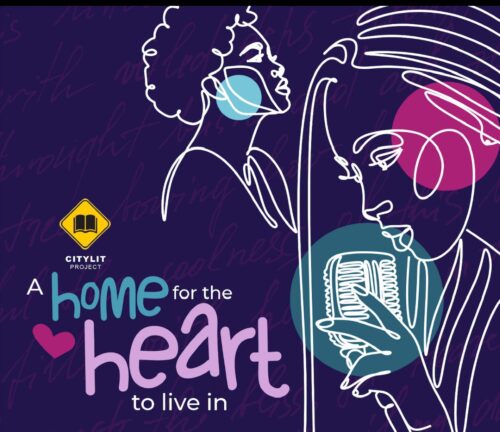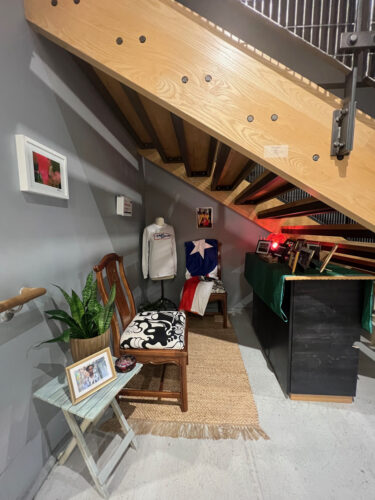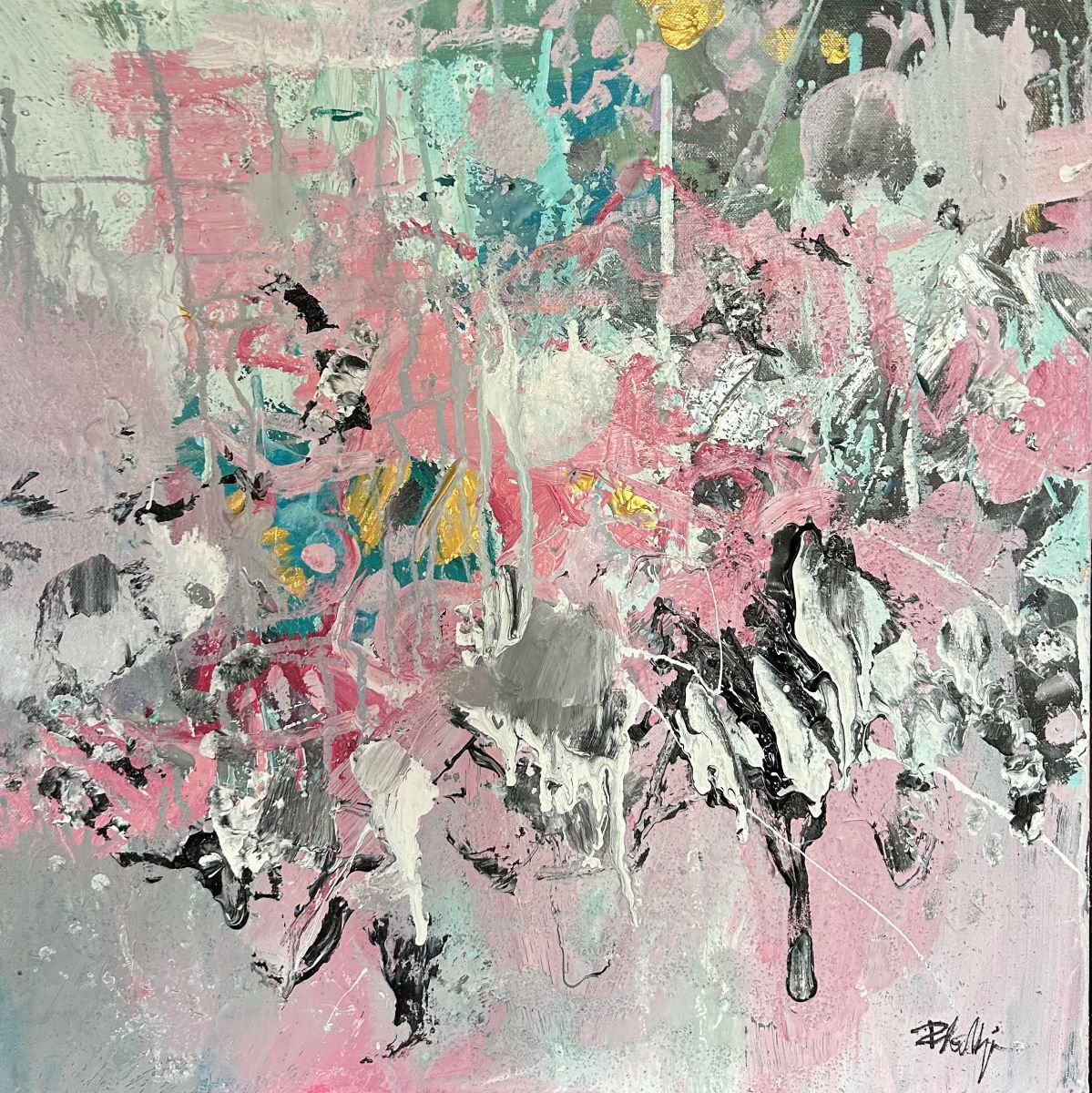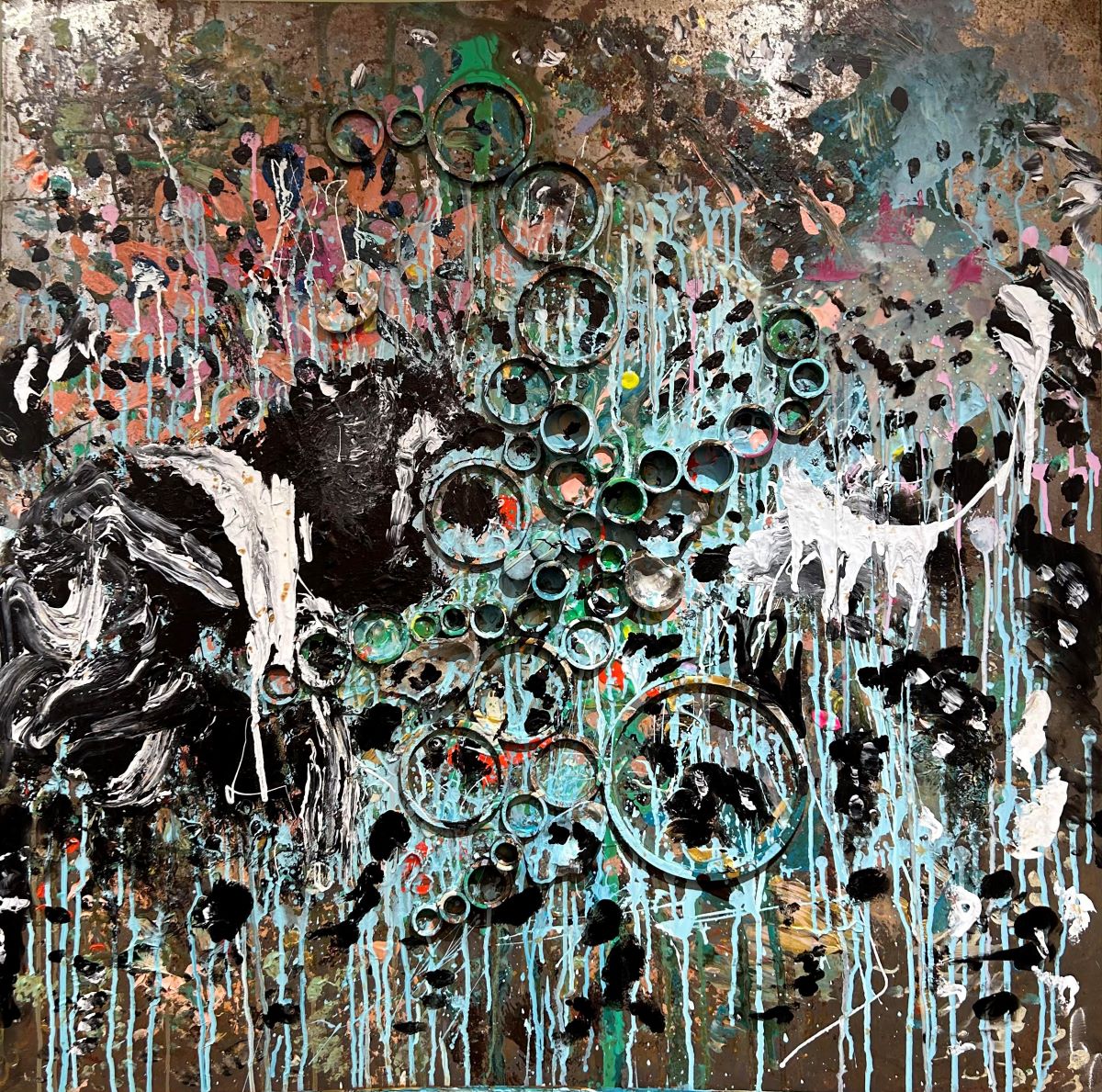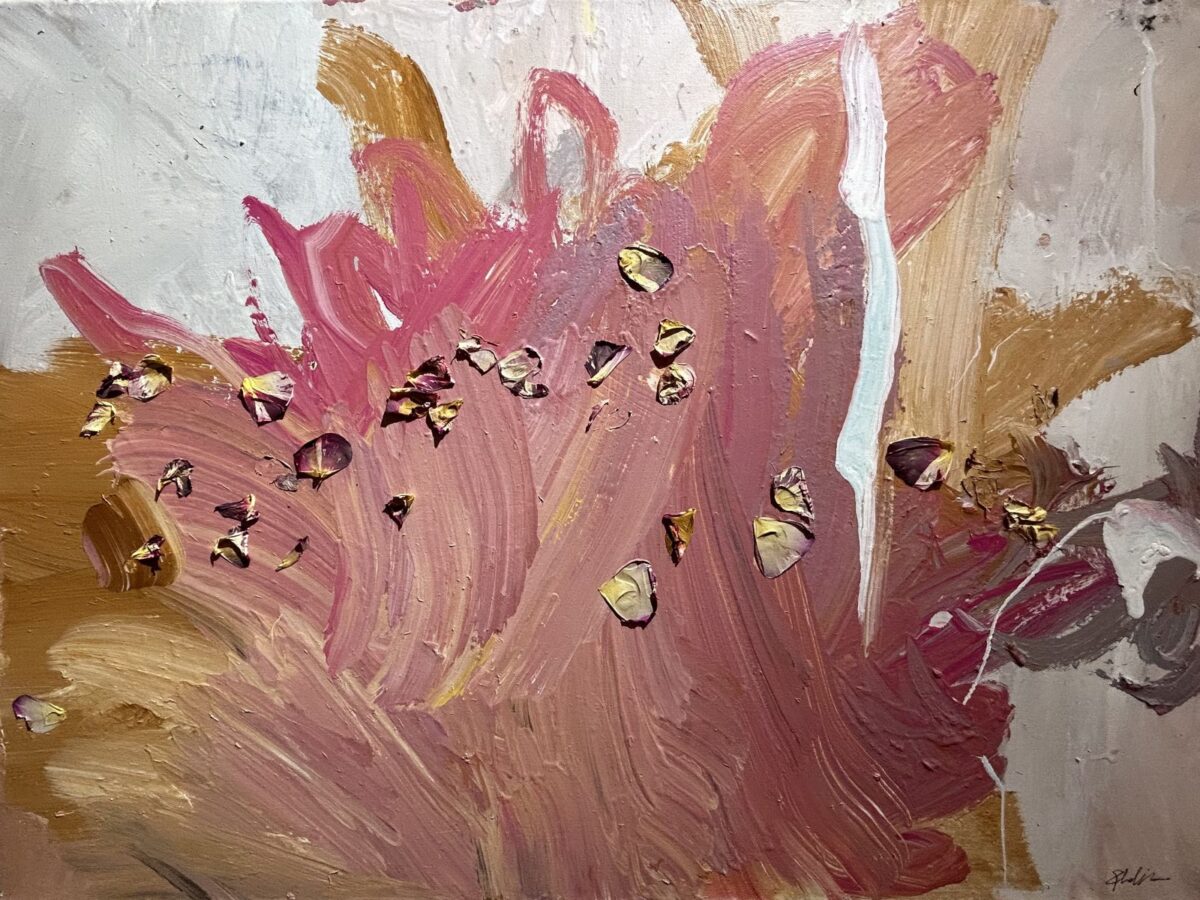Pothik Chatterjee’s global upbringing—he was born in Kolkata, India, and raised in Dubai, Paris, Abu Dhabi, and Jakarta—is abundantly clear in his abstract art. His calm and meditative acrylic paintings are accented with the gold iconography of Hindu goddesses.
The Impressionism of Claude Monet’s Water Lilies is alive in how he plays with light and shade. Chatterjee, whose first solo show opens at Highlandtown Gallery this evening, also emulates the vibrant tints and tones of Balinese dance costumes.
“I see my paintings as a global fusion,” he says. “There was something really beautiful in every place that I grew up in that ultimately influenced me.”
While Chatterjee is confident in who he is today, he didn’t feel this way as a child or adolescent. It was confusing growing up somewhere other than where he was born, but he felt grounded in visits with his grandmother in Kolkata and picking flowers from her garden for her evening prayer. The shapes and colors of hibiscus, jasmine, and marigold show up in his work today. He has also painted over incense sticks from his own ritual practice.
